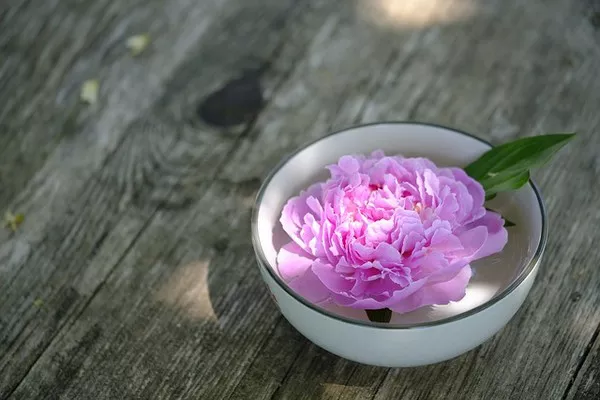Peony flowers, often referred to as the “queens of the garden,” are renowned for their breathtaking beauty and rich symbolism. With their lush petals, vibrant colors, and captivating fragrance, peonies have become a beloved favorite among garden enthusiasts and florists alike. In this article, we delve into the exquisite details that define the appearance of a peony flower, exploring its various forms, colors, and unique characteristics.
Physical Characteristics
Peonies are herbaceous perennial plants that belong to the Paeoniaceae family. The most distinct feature of a peony flower is its sumptuous, full-bodied blooms. These blossoms are characterized by numerous layered petals that form a voluminous, cup-shaped structure. The petals are soft and velvety, creating a luxurious texture that adds to the overall allure of the flower.
The Anatomy of a Peony Flower
Peony flowers consist of several key parts, each contributing to its overall aesthetic appeal. The central part of the flower is the reproductive structure, comprising the stigma, style, and ovary. Surrounding the reproductive organs are the petals, which can vary significantly in number and arrangement.
Peony petals are often described as either single, semi-double, or double, depending on the number of layers. Single peonies have a simple arrangement of petals, while semi-double and double peonies feature multiple layers, creating a lush and extravagant appearance. The number of petals can range from a few to over a hundred, contributing to the diversity of peony cultivars.
Color Variations
One of the most enchanting aspects of peony flowers is the wide array of colors they come in. Peonies are available in shades ranging from pristine whites and soft pinks to vibrant reds, rich purples, and even coral and yellow hues. The diversity in color allows for endless possibilities in garden design and floral arrangements.
In addition to solid colors, some peony varieties boast captivating patterns and combinations. For example, the Japanese peony variety often features contrasting colors with a ring of staminodes (petal-like structures) surrounding the central reproductive organs. These intricate details add an extra layer of visual interest to an already stunning flower.
Shapes and Forms
Peony flowers come in various shapes and forms, contributing to their versatility in both gardens and floral arrangements. The classic, well-known form is the double peony, with its dense layers of petals creating a full and rounded shape. The single peony, with its simplicity and elegance, is another popular form, particularly favored in contemporary garden designs.
Beyond the traditional forms, there are unique variations such as the anemone-centered peony, featuring a cluster of narrow petals surrounding a dense center of staminodes. The bomb-type peony is recognized for its globe-shaped blooms, while the bowl-shaped peony has a more open and shallow appearance. These diverse forms allow gardeners and enthusiasts to choose peony varieties that best complement their aesthetic preferences and garden design.
See Also What Does A Forget Me Not Flower Look Like
Fragrance
The allure of peony flowers extends beyond their visual appeal – their enchanting fragrance adds a sensory dimension to their beauty. Many peony varieties emit a sweet, delicate scent that enhances the overall experience of being in their presence. The fragrance of peonies is often described as floral, with subtle hints of rose, citrus, or even honey, depending on the cultivar.
Caring for Peony Flowers
To ensure the optimal development and longevity of peony flowers, proper care is essential. Peonies thrive in well-drained soil with good sunlight exposure. Adequate spacing between plants is crucial to prevent overcrowding, allowing for proper air circulation. Regular watering, especially during dry periods, is important for maintaining healthy and robust plants.
As peonies are perennial, they require minimal maintenance once established. However, deadheading – the removal of spent flowers – is recommended to encourage the plant to redirect energy into producing more blooms. Additionally, providing support for taller varieties can prevent stems from bending or breaking under the weight of the large blossoms.
Conclusion
In conclusion, the peony flower stands as a testament to nature’s artistry, captivating hearts with its lush petals, vibrant colors, and enchanting fragrance. Whether adorning a garden or gracing a vase in a floral arrangement, the peony’s timeless beauty transcends trends and continues to be celebrated around the world. As gardeners and flower enthusiasts explore the many varieties of peonies, they discover a rich tapestry of shapes, colors, and forms that make each peony truly unique – a queen among flowers, reigning with grace and elegance.


